NRL’s on-field coaching loophole an incident waiting to happen
The NRL should stop describing them as “trainers” and call them what they are - coaches with water bottles, argues MIKE COLMAN.
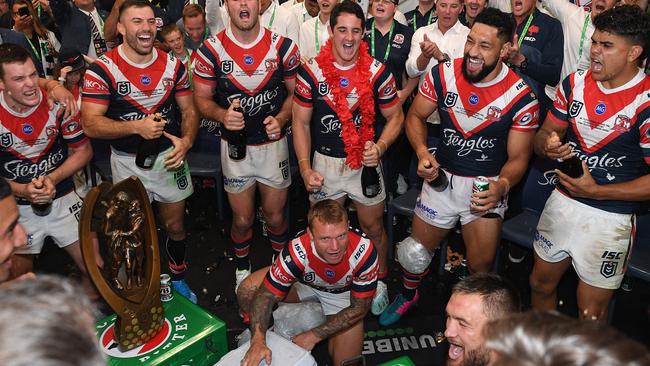
Sport
Don't miss out on the headlines from Sport. Followed categories will be added to My News.
When is a coach not a coach? When he’s carrying a water bottle.
With so much attention focused on the contentious Ben Cummins’ six-again call, one of the most crucial questions raised by the NRL grand final has been largely overlooked.
That being: what was the Roosters trainer even doing on the field when he prevented what could have been a potential try to the Raiders?
Stream over 50 sports Live & On-Demand with KAYO SPORTS on your TV, computer, mobile or tablet. Just $25/month, no lock-in contract. Get your 14-day free trial and start streaming instantly >
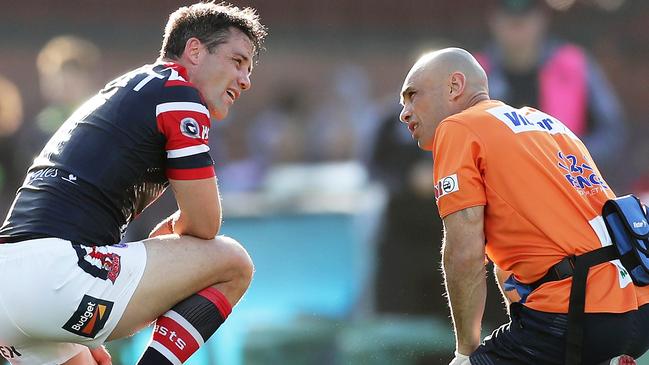
To take it further, why are any trainers permitted on the field during play?
And more to the point, why do they call them trainers?
They are messengers, advisers, organisers, a direct link from the head coach to the players, and a constant annoyance to spectators.
In the case of the Broncos’ Allan Langer he is virtually a surrogate team captain.
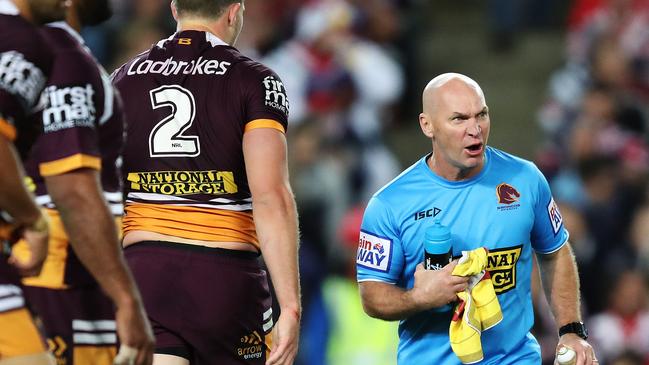
The whole “trainer” loophole is a rort that the clubs are exploiting and the NRL is ignoring.
I can’t think of any other professional sport where a coaching representative is allowed direct access to the athletes when the game is being played.
In tennis even hand signals from the grandstand are outlawed and the AFL moved to ban trainers from the field during play this season after a Collingwood runner impeded one of his own players in last year’s grand final, leading to an ultimately decisive Eagles goal.
Yet for some reason the NRL persists with allowing trainers to run on and off the field and loiter during play when it should have been obvious that a situation like that which occurred on Sunday was just a matter of time.
In a way the NRL was fortunate that Cummins’ blunder averted attention away from the influence the Roosters trainer had on the game. Head of football Graham Annesley was able to argue that Cummins was correct in reversing his call. He would have been hard pressed to justify the chain of events surrounding the unintentional involvement of the trainer.
For instance, what possible reason could he have had for even being in a position to be struck by the ball?
The NRL operations manual states that orange shirt trainers - such as the one in question – are not permitted to pass on messages. Their only duties are to attend to injuries, provide water or assist with interchanges.
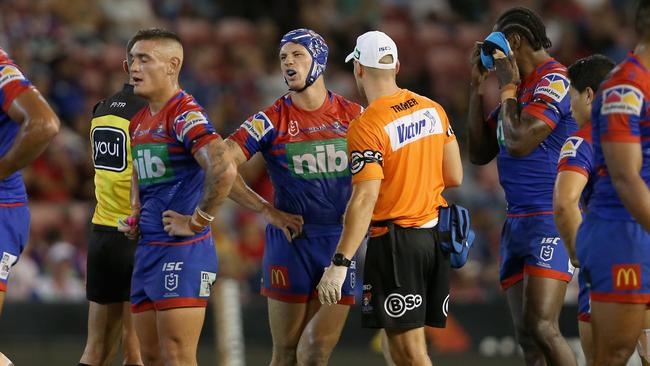
At the time the Roosters’ trainer became involved in the play no-one was injured, there was no interchange, and how much water could a player have needed after less than three minutes of play?
Furthermore, in 2017 the NRL made a directive that all trainers must leave the field after the fourth tackle. Sunday’s incident occurred on the fifth.
So why the trainer was even out there, if not as an on-field coach?
As to whether the scrum feed should have gone to the Roosters, that too is debatable. The laws state that the feed should go to the attacking team.
Given that Sia Soliola had quite legally charged down Keary’s kick and, if not for the trainer’s head getting in the way, Elliott Whitehead might very well have picked up the bouncing ball and scored, could it not be argued that the Raiders were the attacking side?
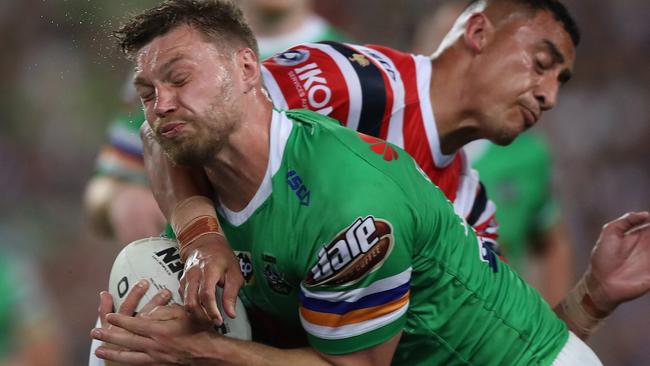
Of course nothing can change the result. What can be changed is the NRL’s policy on on-field coaches - or, as they prefer to call them, trainers.
The operations manual states that blue-shirt trainers are permitted to pass on messages to individual players.
Why? Surely professional footballers should be prepared well enough in the months, weeks and days leading up to a match that they can get through 80 minutes of a game without needing the likes of Alfie Langer or Ronnie Palmer in their ear telling them what to do.
Or is that too much to ask for upwards of $1 million a season?


